PRIME HRM

WHAT IS PRIME-HRM?
The Program to Institutionalize Meritocracy and Excellence in Human Resource Management (PRIME-HRM) integrates and enhances the Personnel Management Assessment and Assistance Program (PMAAP) and the CSC Agency Accreditation Program (CSCAAP). It is a mechanism that empowers government agencies by developing their human resource management competencies, systems, and practices toward HR excellence.
PRIME-HRM entails greater engagement not just of the human resource management officer (HRMO) but also of the officials and the rank-and-file employees of the agency.

WHAT HAPPENS UNDER PRIME-HRM?
The CSC will assess the maturity level of an agency’s competencies, systems, and practices in four HR systems: (1) recruitment, selection, and placement; (2) learning and development; (3) performance management; and (4) rewards and recognition.
Based on the assessment, a government agency may be classified according to four maturity levels:
- Transactional HRM – HR assumes personnel function that is mostly separate from agency/business and talent needs
- Process-Defined HRM – There is a set of defined and documented SOPs established, though it needs improvement. It is characterized by goal-oriented decision making. There is some automated system but little integration of data.
- Integrated HRM – Uses process metrics for continuous improvement, an HR management toolkit, and data-driven decision making. HR function supports agency business needs.
- Strategic HRM – HR processes are focused on continually improving process performance. It is also systematically managed by a combination of process optimization and continuous improvement. At this level, HR helps to drive agency business decision on people, data, and insight. HR strategy is already part of the agency strategy.
The CSC provides customized technical assistance and developmental interventions according to the determined needs of the agency.

Agencies may vie for special rewards and citations for HR excellence.

EEOP POLICY FRAMEWORK

PRIME-HRM
RECRUITMENT, SELECTION AND PLACEMENT
In its pursuit to adhere to the policy of the Department of Education to strictly adhere to the principles of merit, competence, fitness, and equality, and to the Civil Service Commission’s application of equal employment opportunity, the Schools Division Office of Olongapo City, under the close supervision and management of its Human Resource Management Office, Personnel Unit, and the Human Resource Merit Promotion and Selection Board, presents the Recruitment Selection and Placement (RSP) procedure and guidelines.
The RSP page shall give its Human Resources and all those who shall take interest to serve SDO Olongapo City, a clearer understanding of the RSP processes and procedures, the essential and required documents to present in order to qualify for employment, reclassification, reappointment, reemployment, promotion and other personnel actions and opportunities.


PRIME-HRM
LEARNING AND DEVELOPMENT
Learning and Development (L & D) is an essential part of the human resource management. Through L & D, opportunities to upgrade the competencies of personnel in order t o deliver high quality of results would redound to optimum client’s satisfaction. One of the four human resource systems to achieve Program to Institutionalize Meritocracy and Excellence in Human Resource Management (PRIMEHRM) is a functional and progressive learning and development system in an organization. The main goal for learning and development is to establish the overall structure and processes for setting policies, establishing learning and development system and budget, and overseeing management and effectiveness of learning and development function and its alignment to the goals, vision and strategic direction of the Division.
Through L & D framework, responsibility and roles of key person will be defined and hierarchy of planning processes and operations and the monitoring and evaluation of the programs and projects and its determining value and effect to the primary customers.
PRIME-HRM
PERFORMANCE MANAGEMENT
As we start our quest to provide our agency’s institutionally sustained development goals both individually and as a whole, it is important to ensure institutional effectiveness by considering the duties and responsibilities of all personnel both in the Division and in the school levels as it links to the Program to Institutionalize Meritocracy and Excellence in Human Resource Management (PRIME-HRM) pillars which assist in developing the human resource management competencies, systems, and practices towards excellence.
The goal of the EOP on Performance Management is for all personnel to be evaluated based on accomplishment and merit and not on employee’s age, gender, civil status, disability, religion, ethnicity, social status, income class, paternity affiliation, political affiliation, pregnancy or other similar factors/personal circumstances which run counter to the principles of merit, fitness for the job and equal employment opportunity.


PRIME-HRM
REWARDS AND RECOGNITION
SDO Olongapo City PRAISE’s general objective is to encourage, recognize and reward employees, individually or in groups, for their suggestions, innovative ideas, inventions, discoveries, superior accomplishments, heroic deeds, exemplary behavior, extraordinary acts or services in the public interest and other personal efforts which contribute to the efficiency, economy and improvement in government operations, which lead to organizational productivity.
The SDO Olongapo City, in making any Human Resource decision or any related decision shall ensure that no person is discriminated against, nor any person is unduly favored on account of their sex and gender, age, civil status, physical characteristics and attributes, religion, belief, creed, race, family background, political affiliation, socio-economic standing and other attributes that violates the principles of equality, equity and fairness.
SCHOOLS DIVISION OFFICE OF OLONGAPO CITY
Address: Gordon Avenue, New Asinan, Olongapo City, Zambales, Philippines, 2200
Contact Details: (047) 222-2568/ (047) 603-0570
Email Address: olongapo.city@deped.gov.ph


REPUBLIC OF THE PHILIPPINES
All content is in the public domain unless otherwise stated.
ABOUT GOVPH
Learn more about the Philippine government, its structure, how government works and the people behind it.




